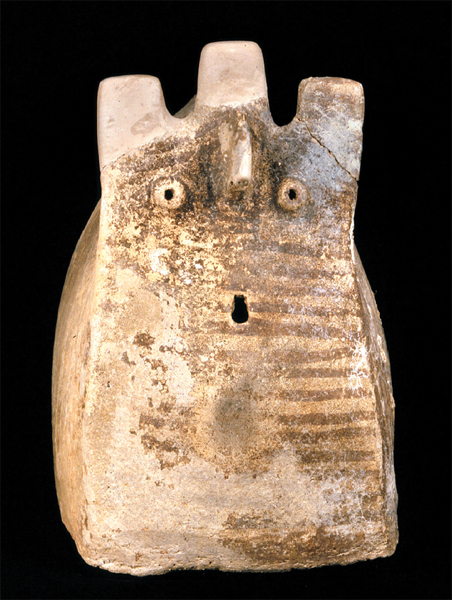Image Details

Courtesy Israel Antiquities Authority and Zvi Gal, Dina Shalem and Howard Smithline
Millennia ago, in the period archaeologists call the Chalcolithic (c. 4500–3500 B.C.E.), the peoples of the Levant interred the bones of their deceased in fancifully decorated clay boxes, or ossuaries, such as this example crafted with bead-shaped eyes, a protruding angular nose and a small but expressive mouth. But how exactly were the dead reduced to mere piles of dry bones that could then fit neatly into these mortuary boxes? The grim answer, according to archaeologist Rami Arav, is that the peoples of the Chalcolithic practiced excarnation, a ritual in which the bodies of the deceased were left exposed to vultures and scavengers. His theory also explains a mysterious ancient site in the Golan known as Rogem Hiri.
